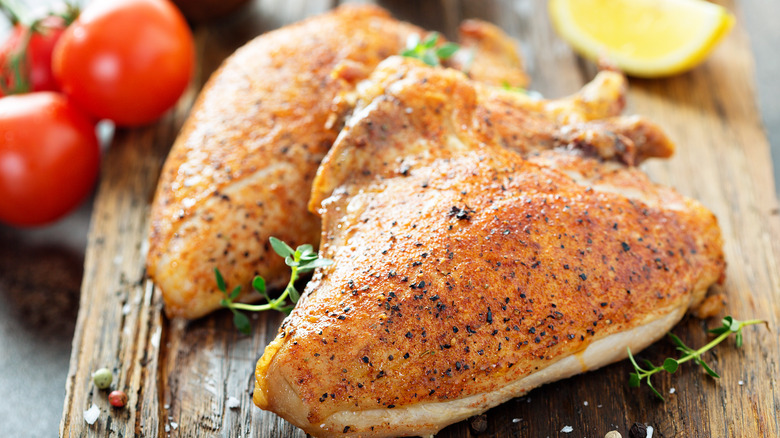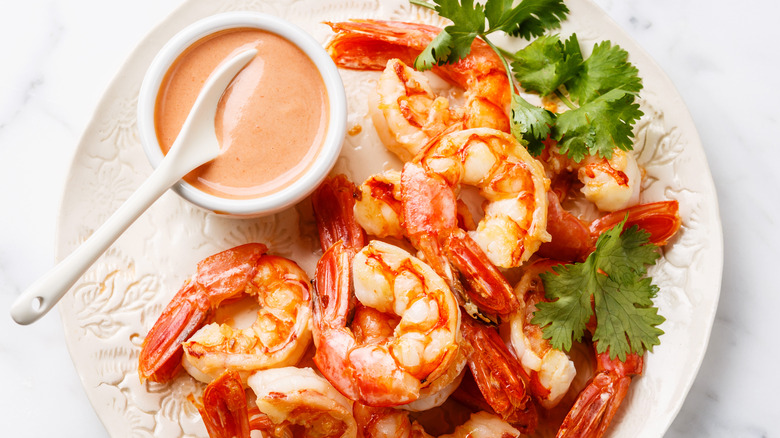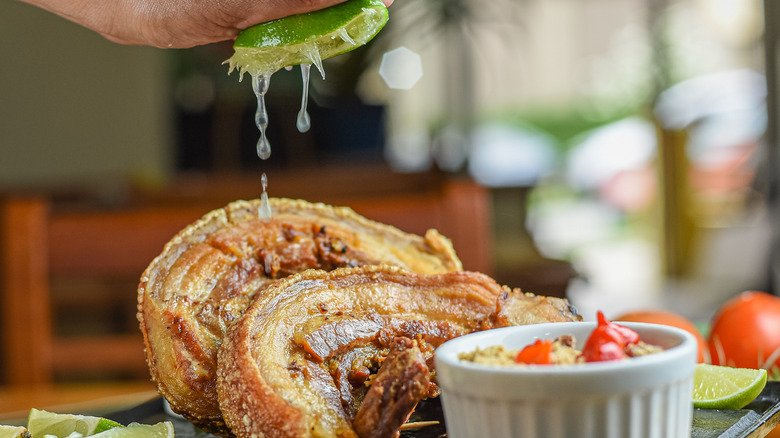Ina Garten's Pro Tip To Make Simple Ingredients Shine
Ina Garten's laid-back approach to entertaining is the gold standard for many hosts. Her style emphasizes flavor without using recipes that are too complicated or require a lot of ingredients. Garten's recipes often stress buying the best quality ingredients accessible to the home cook. While she's written over a dozen bestselling cookbooks, Garten is also known for serving locally sourced, store-bought snacks like nuts and potato chips in fancy silver bowls instead of feeling compelled to cook the entire meal herself.
Similar to the Italian style of cooking, Garten often talks about using simple ingredients in her recipes and allowing them to shine. According to Garten, the key to turning two components into a memorable dish starts with purchasing seasonal ingredients when they naturally taste the best.
Garten then boosts the ingredient to add depth — often without guests knowing. For example, she'll add a splash of sweet fortified wine like cassis or port to intensify fresh fruit. Try including raspberry liqueur on berries or Calvados in apple desserts. Simple recipes like her three-ingredient roasted fig and prosciutto appetizer call for ripe figs, Italian prosciutto, and good olive oil. If the ingredients are high enough quality, nothing else is needed to appreciate them fully.
Use the best ingredient for the job
While a boneless, skinless chicken breast is easier to prepare, Ina Garten knows cooking the bird on the bone with the skin on will taste better. One fan wrote into the "Ask Ina" section of her blog, Barefoot Contessa, and questioned whether this was necessary. Garten explained, "Even if you plan to remove chicken skin before serving, it's a good idea to leave it on when cooking for super-flavorful meat. I find that it makes the meat much more tender and moist."
This is true for all cuts of meat, even cured. Garten recommends purchasing bone-in hams versus spiral-cut for superior results, even though they are more work to carve. Some say the bone adds flavor, but, in actuality, it slows down the cooking process, allowing the protein to retain its juices and stay moist. Butchers can cut the meat off the bone for large roasts and tie it back on, so you get the benefit without the work. It will take longer to cook but won't dry out, which is especially critical with leaner cuts like white meat chicken.
Use the best cooking method
With quality ingredients on hand, Ina Garten's methods of preparing certain dishes have evolved over the years as her culinary knowledge has grown. While most of us poach or boil chicken to make chicken salad, Garten discovered an easier, more flavorful approach. She roasts skin-on, bone-in chicken breasts and removes the skin and bones when the chicken is cooked. Instead of diluting the chicken's flavor in boiling water, Garten adds depth by roasting the meat on a sheet pan rubbed with olive oil, salt, and black pepper.
Similarly, Garten forgoes boiling shrimp to make her version of the steakhouse classic — shrimp cocktail. Instead of worrying that the court bullion didn't have enough flavor, Garten roasts the shrimp on a sheet pan with the same ingredients as her chicken salad, intensifying the shrimp's sweet taste. Her method may also be quicker if you're making a lot of shrimp since they only roast for about 8 minutes, and it can take longer than that to get a stock pot of water to boil.
Give the ingredients a boost
In addition to using seasonal, quality ingredients, it's essential to understand how to amplify an ingredient's natural flavor. This is where Ina Garten's decades of cooking experience really shine. Devoted fans will notice how Garten always pairs chocolate and coffee in her recipes, often with a spoonful of quality Madagascar pure vanilla extract. Whether it's a cup of strong-brewed coffee for a chocolate cake batter or instant coffee granules for a chocolate glaze, Garten knows that coffee amplifies the dessert's chocolatey nature and depth of flavor without making the recipe taste like coffee.
Similarly, a dish needs to be woken up on occasion. Sometimes, this can be achieved with a sprinkling of sea salt — even on fruit and desserts — or by adding acidity from citrus or vinegar. Garten squeezes lemon or lime juice on meat and fish to add brightness to an otherwise dull-tasting dish; you can vary the type of acidity depending on the recipe. Use balsamic vinegar to add sweetness or apple cider vinegar for fruitiness to slow-cooked braised meats and roasted veggies; the acid will bring out the flavor without making the dish acidic. Just remember: Keep it simple and seasonal.




